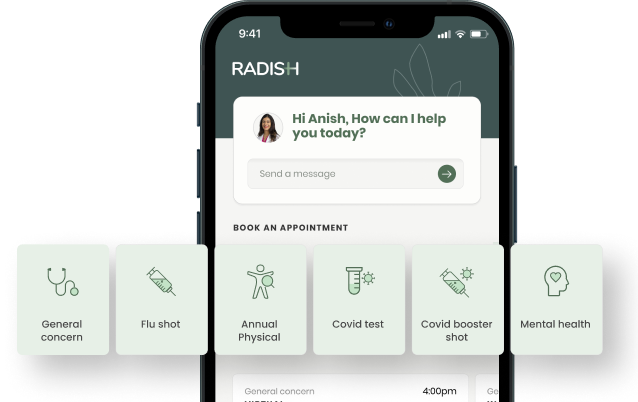How to Help a Loved One in Crisis

Megan McGinn, PsyD
Suicide has become a major mental health concern in the US. Research indicates that the suicide rate has increased by 37% between the years 2000 and 2019, and it is now the second leading cause of death for teens and young adults aged 10-34. We need to talk about it more. Let’s explore what you can do if you have a loved one in need.

Suicide is a sensitive topic that can be alarming and difficult to bring up. However, it is common to have suicidal thoughts: almost 5% of adults in the US had serious thoughts about suicide in 2021. The number was even higher among young adults aged 18-25, at 13%. Especially for young adults, it is important that conversations about suicide become less taboo or stigmatized and more frequent at home and at school.
If you or someone you know is experiencing suicidal thoughts or intent (ie, has a plan to commit suicide), it is important to take the claim seriously but not panic. Often people experiencing suicidal thoughts or urges feel like they can’t tell anyone or else they will be judged or hospitalized, which leads to an escalation in suicidality. Suicidal thoughts are often divided into passive wishes versus active intent.
Passive Suicidal Ideation and How to Approach It
Many people experience the less dangerous symptoms of passive wishes to “not be here” or escape life in some way. They may think “life would be better off without me” or “I wish I did not have to live anymore because it’s too painful and nothing’s going to change.” This kind of thinking is a common symptom of depression that accompanies hopelessness. If you or someone you know is experiencing passive suicidal ideation, their life may not be in danger, but is extremely important that they have someone listen to them and validate their feelings.
Typically, people with depression and suicidal ideation experience that others minimize their feelings, telling them that they have nothing to be sad about. Because they want the suicidal person to feel better, they say, “Don’t worry, your life is going great, there is nothing to be down about!” Though these people have good intentions, they further isolate the suicidal person, increasing the guilt and shame he or she may experience about being depressed.
A more helpful response to suicidal ideation is to ask open ended questions, allowing the person to further emote about how they are feeling and discuss what triggers their depression. It is also important to provide validation, meaning that you acknowledge the emotion as well as the trigger, and that you understand why they may feel that way (even if you disagree). I see this happen often with children and parents. The child feels suicidal because of perceived neglect from his or her parents. The parents, however, never intended to neglect the child and feel the need to defend themselves rather than validating (ie, acknowledging) the child’s experience, even if it is different than their own. A validating statement could be, “I can see how you would feel that way and it sounds painful. I’m sorry for the part that I played in this. What can I do better?” Or the parent can ask for more details about the source of the pain, “What happened that made you feel this way?” Open, honest, validating conversations like these are extremely important preventative measures so that passive suicidal ideation does not become an active intent to self-harm. If you do not feel comfortable having these conversations with your loved one, therapy can be very effective at this stage, and at Radish we are happy to work with patients experiencing suicidal ideation.
How to Recognize when Suicidal Ideation Becomes Active
Sometimes people move from just thinking about suicide, to actually having urges to do it. We judge active suicidal intent by whether or not the person has a specific plan (ie, I would like to overdose on a prescription pill) and if they have access to the self-harming agent (ie, the pills). We also assess when the patient would like to do this (immediately versus sometime in the future). If you or someone you know expresses an immediate urge to harm themselves with something readily available, it is the responsible action to call 911 to receive professional help in a hospitalized setting. If it is not an immediate urge, it is important to remove access to any self- harming agents, monitor the person and seek professional help from a therapist.
Not everyone will tell you directly that they want to kill themselves so it is important to look out for these other risk factors and express non-judgmental curiosity about them. Most importantly, find out if the person has had any self-harming behaviors or psychiatric hospitalizations in the past, as this can be a strong predictor of current behaviors. Here are some of the other major risk factors to look out for. If you note at least 3 of these, it is important to contact a mental health professional.
- Trauma: Current and past physical, sexual, or emotional abuse and/or trauma.
- Triggering Events: Factors, stressors, or interpersonal triggers, especially those leading to humiliation, shame, despair, or loss.
- Substance Use: Any significant change in pattern of use, or current/past use.
- Trapped: Feeling of hopelessness and inability to escape current situation. Examples could include domestic violence, financial debt, health condition that feels inescapable, etc.
- Withdrawal: Removal from friends, family, and society, isolation, or living alone.
- Mood: Any significant change from baseline, especially when demonstrating increased anxiety, agitation, lack of self-control, impulsivity, or hypomanic or manic states.
Radish Is Here to Support You
If you or a loved one are struggling with depression or suicidal thoughts, Radish Health is here to support you. Please feel free to reach out to our caring and non-judgmental medical team right away to get help. If you are in crisis, please call or text the Suicide Crisis Hotline at 988, text HOME to the Crisis Text Line at 741-741, or go to the emergency room.
Request a Free Demo
Learn how Radish Health can help you improve employee health and save on healthcare.
Request a Demo